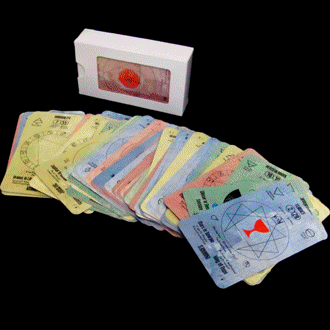Throughout the Middle Ages the powerful Roman goddess Fortuna continued to be believed in, feared and propitiated, possibly even more than the divinity, on account of her well-known fickleness. Although she was dubbed “Dame Fortune” by the populace, the church fathers Lactantius, Aquinas and Augustine regarded her as little more than synonymous with the Devil himself.
But by the dawn of the Renaissance she had devolved into a recurring poetic fiction, and as such she appeared as a character in the works of, among other writers, Dante, Boccaccio and Ariosto. In paintings and illustrations she was often depicted blindfolded to demonstrate just how capricious she was, frequently turning a great wheel to which all humanity clung, the poorest wretch at the bottom, the most powerful potentate at the top. The fact that her wheel revolved without stopping symbolized the flux and change of all things, especially the impermanence of wealth and status. She and her wheel featured in a variety of divination devices of the fifteenth century, and indeed she represents one of its central allegorical images of the trumps of the tarot deck. (Paul Huson, Dame Fortune’s Wheel Tarot)
Dame Fortune’s Wheel Tarot
















